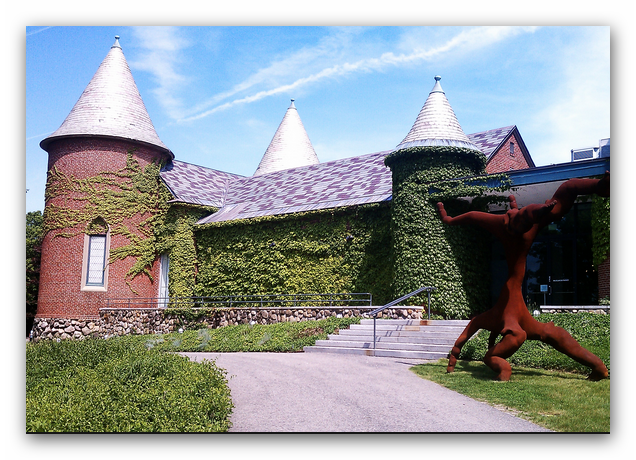Oct 19 2019 - Mar 10 2019
DeCordova Sculpture Park and Museum
Lincoln, MA
The display of this painting in deCordova’s Window Arcade Gallery is part of a program that brings focus to exceptional artworks from deCordova’s permanent collection. Works are rotated periodically, allowing visitors to experience rarely seen pieces.
John McNamara’s large-scale works from the 1980s earned him the label “epic abstractionist” from Boston art critics. This monumental canvas envelops the viewer in dark washes of color, against which striated brushstrokes seem to give off a phosphorescent glow. The central hill-like form is a recurring motif in this period of McNamara’s work; here it emerges like a glacier floating on a reflective body of water. Other references to the natural world, such as horizon lines, lend the scene a sense of depth and cause Murk to shift between pure abstraction and landscape.
Though the brushwork appears loose and improvised, McNamara’s process involves sketches and careful planning. He hopes the result prompts slow-paced looking: “I prefer to seek a contemplative art that encourages viewers to take time, to wander visually. I want secrets to be revealed slowly, in a way that retains their uncertain quality.”
As part of the Highlights initiative, individuals from outside the Museum are invited to lend their voices and insights to our program. Jeanne and Don Stanton, donors of this painting, reflect on McNamara’s work:
Don and I had been collecting paintings by Boston artists for several years when we met Carl Belz, then-director of the Rose Art Museum. “Take a look at John McNamara,” Carl insisted. “He has a painting at the Cutler/Stavaridis Gallery.” We went to take a look. “Huh?” we said to each other, baffled by the huge, thickly painted canvas with its abstract shapes and clashing colors. Several months later we looked up from whatever we were doing and said, almost in unison, “We have got to have that painting!” Sunrise Serenade, its individual paint strokes each a clear shade of blue, purple, peach, or white, was the first of our many McNamaras.
Don began visiting John’s studio. There was always a lot to see, since he worked on many paintings at once, aiming to remain open and fresh by constantly moving about. John lived a monkish life, without creature comforts or distractions; his life happened in his studio, which was what he wanted and could afford.
Enriched suddenly by the sale of several paintings, John spent this windfall on a Cézanne etching. We hadn’t seen it but John’s Cézanne affinity had been there all along, with his discrete, carefully placed brushstrokes, his solid assertive forms on a horizontal plane like apples on a table.
As John’s work evolved during the 1980s, the palette became darker, the surface smoother and overlaid by drawing—thin lines and bands that loop and tangle like vines in a forest. While John eschews references, Murk is undeniably some kind of landscape, but one with a religious quality: an interior, glowing light suffuses the darkness, however subtly.
Murk was a painting we had to have, not only for its depth, saturated color, and luminosity, but also for its ineffable presence as a painting.
Credit: Exhibition overview from museum website.
Exhibition Venues & Dates
Oct 19 2019 - Mar 10 2019
DeCordova Sculpture Park and Museum
Lincoln, MA
